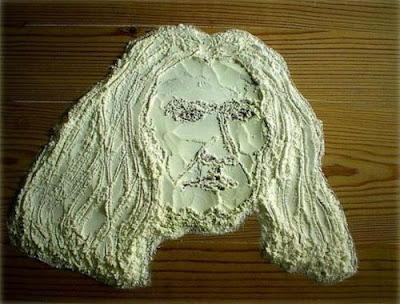 crap-o-historic
crap-o-historic----------------- Bulletin Message -----------------
From: Peltier Central Texas Branch Support Group
The Peltier Trial
Wrongful Conviction
In March 1977, Leonard Peltier stood trial in Fargo, North Dakota. According to the government, the case was originally assigned to the federal district court in Sioux Falls, where Judge Nichol (see Wounded Knee) would have presided. When Nichol excused himself, the case was assigned to Judge Paul Benson who removed the trial to Fargo.
It should be noted that, in December 1982, attorney William Kunstler discovered in a telephone conversation with Judge Edward McManus (who had presided over the Butler/Robideau trial) that McManus, not Benson, had been scheduled to try the Peltier case. He had been astonished, he said, to find himself arbitrarily removed in favor of Judge Benson. To this day, it is not clear how McManus' removal was accomplished or by whom specifically. There appears to have been a concerted effort, however, to prevent the involvement of judges in Peltier's trial who had previously made rulings in favor of defendants in the government's prosecutions of other members of the American Indian Movement (AIM).
The Federal Bureau of Investigation (FBI), as it had done during the Butler/Robideau trial, spread rumors about anticipated "terrorist" attacks by AIM members that built tensions in an already anti-Indian environment.
It was later discovered that the FBI met secretly with Judge Benson prior to trial. There are no notes of these meetings but, not surprisingly, Judge Benson's subsequent rulings were made almost always in favor of the prosecution.
Documents discovered after the trial also revealed that the FBI had informants in the Wounded Knee Legal Defense/Offense Committee at or about the time of Leonard's capture (a critical time, i.e., while a defense was being mounted).* The government has refused to divulge the identities of the informants. Infiltration of the defense team would have meant that the prosecution received first-hand information concerning the defense, a clear violation of Leonard's constitutional rights.
Jury selection, completed in only one day, resulted in an all white jury of ten women and four men, two of whom were alternates. They were sequestered for the duration of the trial. Never in any danger, they nevertheless were made to feel vulnerable to attack. They were transported to the court house in a bus where the windows had been taped over and escorted by Special Weapons And Tactics (SWAT) team members at all times.
The government presented fifteen days of evidence to the jury after which the defense presented six days of evidence. However, due to frequent rulings in the prosecution's favor, the jury actually heard only two and one-half days of the defense case.
On April 19, 1977, after 11 hours of deliberation, the jury returned a verdict of guilty.
What became evident much later is that the government committed fraud on the court and violated Leonard's constitutional right to a fair trial by withholding evidence, presenting false evidence, and intimidating witnesses into committing perjury.
Ballistics Evidence
Critical ballistics evidence that reflected Mr. Peltier's innocence was withheld during his trial. Specifically, the ballistics expert for the FBI, Evan Hodge, testified that he had been unable to perform the best test, a firing pin test, on certain casings found near Agent Coler's car because the rifle in question had been damaged in a fire. Instead, he stated that he had conducted an extractor mark test and found the casing and weapon to match.
Years later, documents obtained through the Freedom of Information Act (FOIA) showed that, in October 1975, a firing pin ballistics test had indeed been performed on the rifle and that the results were clearly negative. In short, the fatal bullets did not come from the weapon alleged to have been fired by Leonard Peltier. It should also be made very clear that the AR-15 and FBI-issued M-16 deliver the same .223 caliber round. However, the jury never heard about any of these crucial issues. More
On a related matter, SA Fred Coward testified that he was able to see Peltier at the site of the shoot-out, some 700 feet away, using the telescopic lens on his rifle. The defense attorneys duplicated this sighting and found it to be impossible. However, Judge Benson would not allow a test of the claim in court. Coward's testimony was allowed into evidence and used as a basis to support Peltier's conviction.
The Pickup Truck
Equally disturbing are the numerous discrepancies regarding the key vehicle in the case. Agents Williams and Coler had radioed that they were chasing a "red pick up truck" which they believed was transporting a suspect. The chase led to the Jumping Bull Ranch and the fatal shoot-out. At trial, however, the evidence had changed to describe a "red and white van," quite a different vehicle and which, not coincidentally, was more easily linked to Mr. Peltier.
Witnesses
No known witnesses exist as to the actual shooting of FBI Agents Coler and Williams. Three adolescents gave inconclusive and vague testimonies at Peltier's trial, contradicting their own earlier statements, as well as each other. All three witnesses admitted they had been seriously threatened and intimidated by FBI agents.
The court, at Mr. Peltier's trial, did not permit the jury to learn of the FBI's pattern and practice of using false affidavits and intimidating witnesses in recent related cases against other members of the American Indian Movement. The jury was thus unable to properly evaluate the credibility of prosecution witnesses' testimony.
The Prosecution's Case
There was no witness testimony that Leonard Peltier shot the two FBI agents.
There was no witness testimony that placed Mr. Peltier near the scene before the agents' deaths occurred. Those witnesses placing Peltier, Robideau, and Butler near the scene after the killing were coerced and intimidated by the FBI.
There was no forensic evidence as to the exact type of rifle that caused the fatal injuries of the agents. Several different weapons present in the area during the shoot-out- evidence now shows that there were other AR-15 rifles in the area-could have caused the fatal injuries. In addition, the AR-15 rifle claimed to be Mr. Peltier's weapon was found to be incompatible with the bullet casing allegedly found near Agent Coler's car (according to the FBI's documents, by two different agents on two different days). Although other bullets were fired at the crime scene, no other casings or evidence about them were offered by the prosecutor in this case.
In short, there was/is no reasonable evidence that Mr. Peltier committed the crimes for which he was convicted. Instead there is very strong evidence of FBI and prosecutorial misconduct.
Comparison of the Two Trials
By 1977, Leonard Peltier was the only remaining individual the FBI could blame for the deaths of the two agents. The charges against Jimmy Eagle had been dropped-the government stipulated that he was not on the reservation on the day of the firefight. (However, FBI documents later revealed that the government decided to dismiss charges against Eagle so that "the full prosecutive weight of the Federal Government could be directed against Leonard Peltier.") Dino Butler and Bob Robideau were acquitted in Cedar Rapids, Iowa, in July 1976.
The Butler/Robideau trial had uncovered much FBI misconduct, such as tampering with witnesses and evidence, perjury, counterintelligence-type activities and tactics used against AIM, and substantial evidence indicating there was a full scale paramilitary assault on Pine Ridge by the FBI and other law enforcement officials on the day in question. The jury as a result concluded that Butler and Robideau were acting in self-defense.
Peltier's defense team had this same evidence and more. Yet they would never be be able to present a major portion of it to the jury.
The government clearly was determined to convict Peltier and succeeded. Leonard Peltier was found guilty not because he was guilty, but because crucial aspects of his trial were manipulated to favor the prosecution and, consequently, cause a conviction.
Click here to review a table that briefly points out the differences between the two trials. Also included in the table are direct quotations from a FBI report on the Butler/Robideau trial dated July 20, 1976, which analyzed the "reasons why [the] jury found the defendants Robideau and Butler not guilty on July 16, 1976." We recommend that you compare this FBI study to the subsequent rulings at Peltier's Fargo trial (Trial Transcript).
*This was not a unique occurrence. During the 1974 Wounded Knee trial of Dennis Banks and Russell Means, an informant who had direct knowledge of the defense case was exposed. The government had vehemently denied to Judge Nichol that any such informant existed.
To know more about the event and the trials in those dusty days, read Peter Matthiessen's "In The Spirit of Crazy Horse".
 An Iraqi stands amid the ruins of the Tawheed Mosque, Baghdad, February 4, 2005. (Photo: Ghaith Abdul-Ahad / Unembedded)
An Iraqi stands amid the ruins of the Tawheed Mosque, Baghdad, February 4, 2005. (Photo: Ghaith Abdul-Ahad / Unembedded) Robert M. Gates during CIA hearing, 1987. Robert Gates during a confirmation hearing for his nomination to be CIA director in 1987. (Photo: Paul Hosefros / The New York Times)
Robert M. Gates during CIA hearing, 1987. Robert Gates during a confirmation hearing for his nomination to be CIA director in 1987. (Photo: Paul Hosefros / The New York Times)

















































